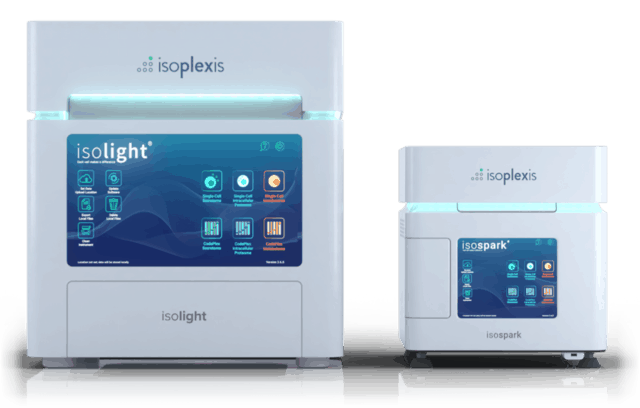As single-cell analysis technologies continue their rapid development—promising a cell’s-eye view of protein interactions and signaling—IsoPlexis hopes to establish itself as a provider of next-generation biology tools with $135 million in new financing.
Backed by Perceptive Advisors, the company’s series D round includes $85 million in equity securities plus a $50 million credit facility, alongside support from Ally Bridge Group, funds managed by BlackRock and other investors.
IsoPlexis’ immediate plans are to expand its global sales and customer support teams, increase its commercial capacity and grow its R&D staff as it builds out its product development strategy, according to co-founder and CEO Sean Mackay.
Last November, the company debuted its IsoSpark instrument, with a tabletop footprint that aims to provide single-cell proteomics capabilities to large and small laboratories alike. IsoPlexis said it plans to begin shipments this month.
“The major use of proceeds is to be able to meet the demand in the right places, for cancer immunology, cell and gene therapy and COVID,” Mackay said in an interview with Fierce Medtech.
“The second use of proceeds is really around the product road map, where we have in-licensed things to interrogate more aspects of single-cell biology, which includes the phospho-proteome,” he added, referring to the body’s wide range of secreted proteins used to transmit messages to other cells and coordinate immune responses.
Using antibody-based proteomic barcodes, IsoPlexis’ hardware can tag and analyze hundreds of individual cells at once and classify each by the range of functional proteins they release.
This can help predict how certain patients may respond to checkpoint inhibitor-based cancer therapies or develop drug resistance—or give a better understanding of how the immune system may react or overreact to the coronavirus that causes COVID-19, including through a partnership with researchers at Yale University.
“We’ve come out with papers showing that if you can measure more of these proteins concurrently with each single cell, you can start to resolve and treat the aberrant signaling pathways that were engaged,” Mackay said.
“What we hope to do is continue to popularize the need to look at the phospho-proteome, because the early data is so promising,” he added. “I think our platform opens up some new modalities to be able to answer critical questions about truly networked intracellular biology and how to interact with targeted inhibitors.”

